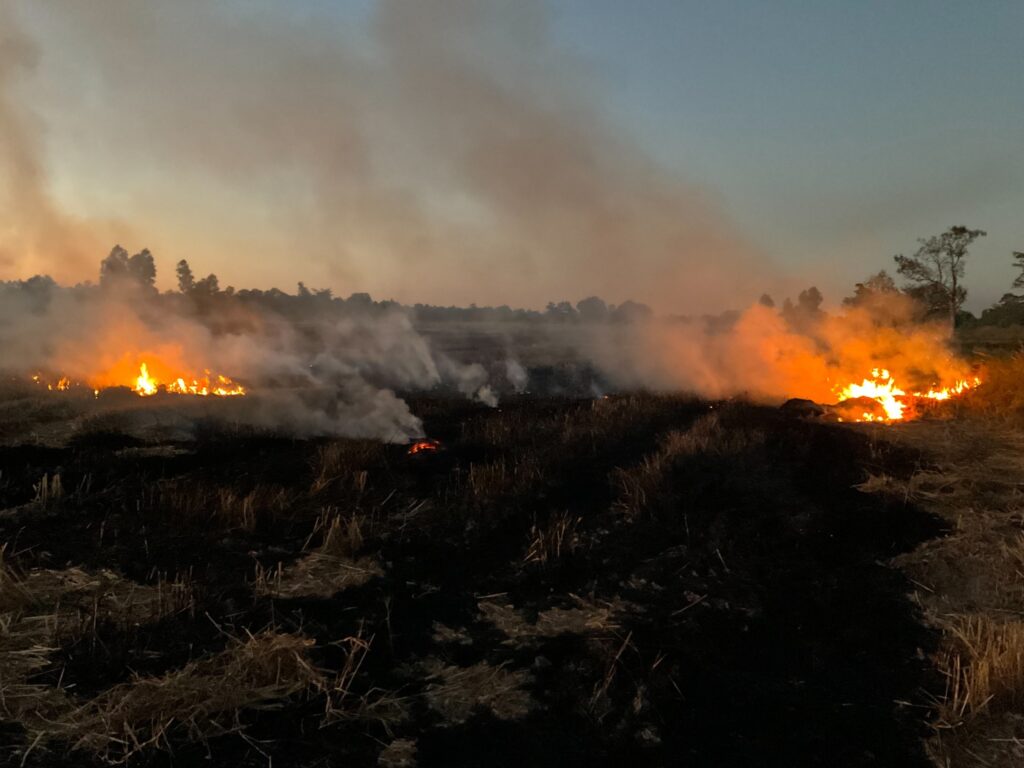The final version is hoped to get promulgated this year to help address the PM2.5 problem at its root causes, the first legislation of its kind in the country
Members of the Lower House yesterday vetted seven draft Clean Air-related acts in their first reading and voted in favour of their principles with 443 votes, paving the way for further deliberation and promulgation of the bill in the second and final readings.
The draft acts were proposed by the government, civil society groups led by Thailand Can, and major political parties including the Move Forward Party.
They contain different focuses but with similar expectations to address the problem more structurally. For instance, the government’s version drafted by the Strategic Transformation Office and Monre is relatively based on state duty, viewing that agencies involved are disintegrated when dealing with the problem.
So, it tries to come up with new or improved environments or systems to facilitate the state agencies’ work and local participation. The draft act also tries to address the problem at its root causes, viewing air pollution as a structural social and economic problem as well as a structural bureaucratic challenge.
Last but not least, the distortion of the free market also contributes to the problem, so the market and production involved need to be regulated, the government’s lawmakers view.
Thailand Can’s version, however, is right-based, basing the content on people’s right to clean air. State duties then are expected to follow to help address the problem at its root causes. Other draft acts, including Move Forward’s, meanwhile, try to address the transboundary problem and polluters’ responsibility with the polluter pay principle as they view the problem is principally resulting from polluters’ acts especially those in the agricultural industry.
A new law vetting committee with 39 members will be set up to scrutinise and synthesise those seven drafts for further readings in Parliament within 15 days, according to the Parliament.


l Credit: Parliament
PM2.5 haze
According to the Northern Breathe Council, the PM2.5 haze problem could be traced back around 16 to 17 years ago when it was first reported to the Cabinet, especially the haze problem in the North. The issue then evolved into a national problem with more impact and severity reported.
State agencies concerned, the Pollution Control Department included, at the same time, developed and introduced new devices to detect and report the PM2.5 haze better with haze monitoring stations nationwide and a new application of Air4Thai to help people monitor the pollution in their areas, prompting the public to learn more about the toxic haze.
In late 2019, the Prayut government addressed the problem as a national agenda and came up with a series of measures and a national plan to address the problem and its causes. At that time, the country managed to address the sources of the problem and divided them roughly into industrial sources, agricultural sources, and transboundary sources
However, the problem grew stronger over time, especially in the North as it’s complicated by locals’ livelihoods which largely depend on farming and the use of fires in the forests for farming purposes. The great extent of the impact caused by forest fires last year prompted serious concerns and criticism against the government’s sluggish action, especially by advocates in the North.
Some agencies including the STO were called on to help study and address the problem at the root causes, leading to the drafting of the country’s first Clean Air Act, alongside the versions by several parties and civil groups.
Read: SPECIAL REPORT: The Hard Lessons of PM2.5 Haze
Indie • in-depth online news agency
to “bridge the gap” and “connect the dots” with critical and constructive minds on development and environmental policies in Thailand and the Mekong region; to deliver meaningful messages and create the big picture critical to public understanding and decision-making, thus truly being the public’s critical voice


